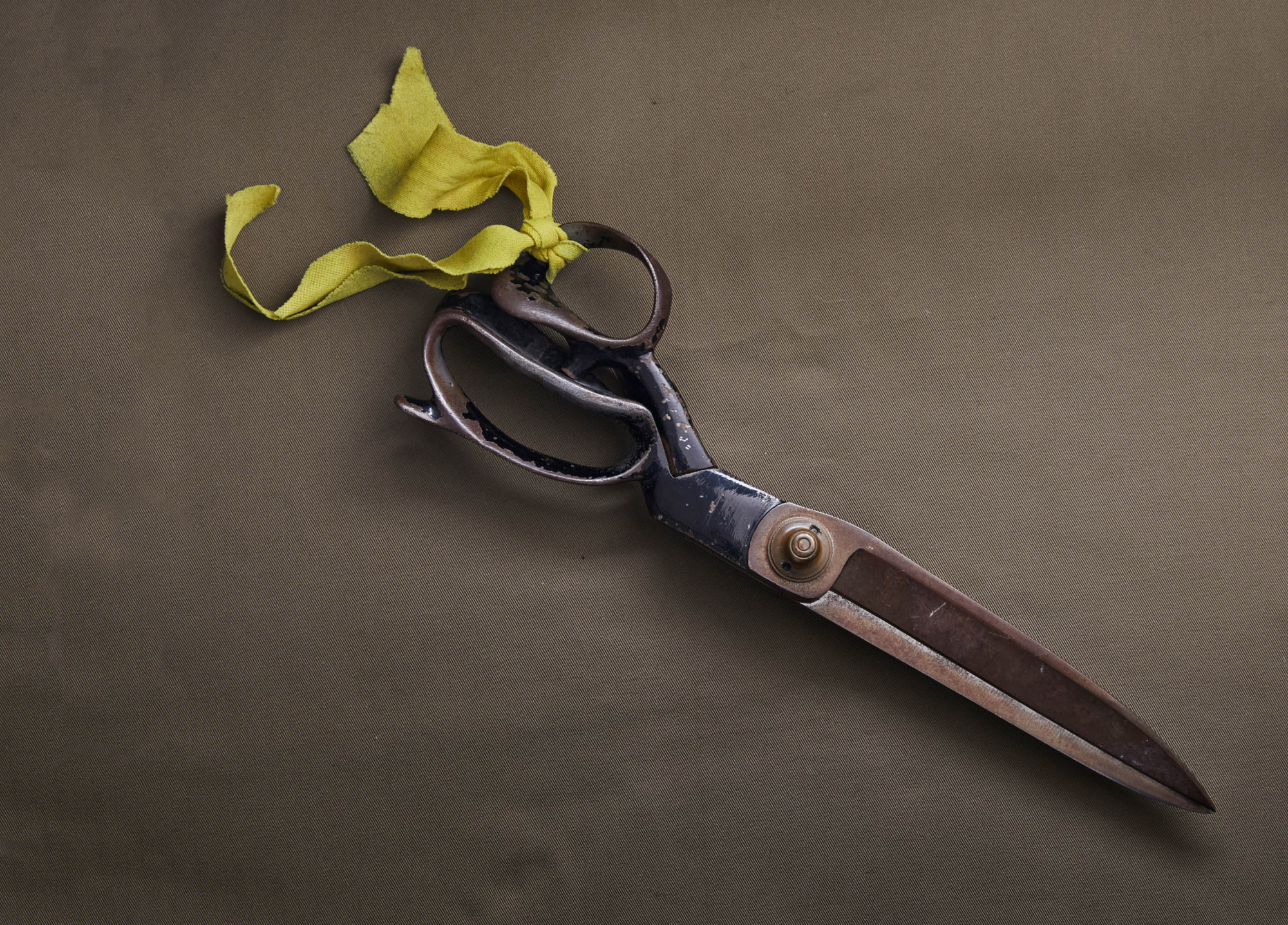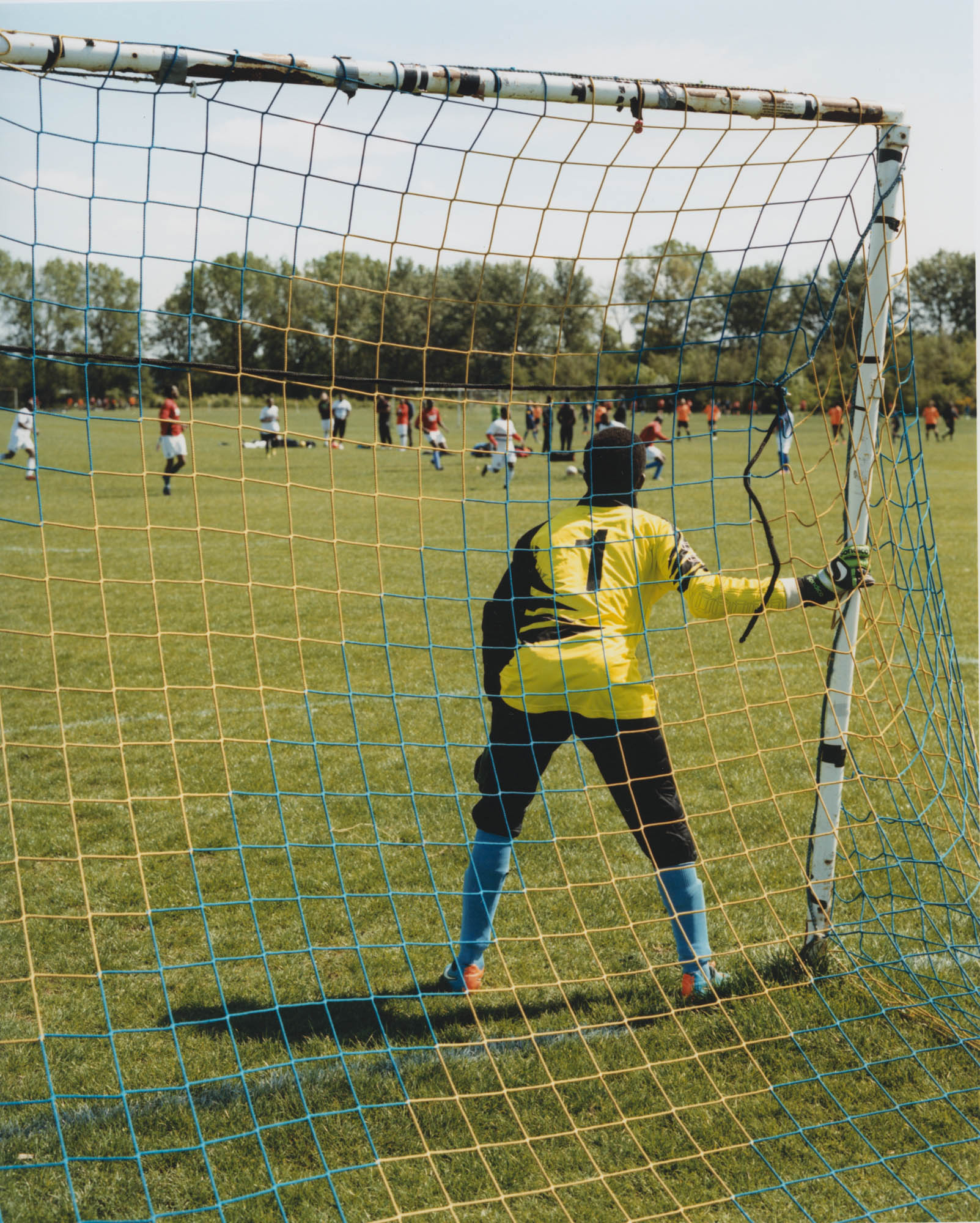This is a pair of old cutting shears, which you would use to cut round the cloth once you’ve chalked out the pattern. Because most of the shears used by cutters look similar, Colin Harvey, the master cutter at Anderson & Sheppard, put this yellow tag on his pair. That way he knew straightaway that they were his. He was quite flamboyant. When he retired, he gave them to me and asked me to look after them. I’ve had them for well over 20 years now, and I still use them to this day. You can’t really get shears in this length any more. They’re about 13 inches long, but they have been shortened as they have been sharpened over the years. I would say they were made in the 1930s. It’s hard to tell. The ones they make these days are a lot smaller in size and weight because years ago the cloth used to be a lot heavier, so you needed bigger shears. Your thumb should be resting on the plate next to the ribbon. When we were at college, the teacher used to come round and rap you on the knuckles if he saw your thumb pointing up instead of lying straight. But I was used to it already because of my father who, since I was 10, taught me how to cut. When I’m done, these shears will be passed on to my son, Matthew.
objects
A Tailor’s Tale
Edwin Deboise picks an object of importance to him and the English Cut team. These shears used to belong to the head cutter at Anderson & Sheppard, where the English Cut tailors and cutters initially met many years ago

objects
A Tailor’s Tale
Edwin Deboise picks an object of importance to him and the English Cut team. These shears used to belong to the head cutter at Anderson & Sheppard, where the English Cut tailors and cutters initially met many years ago
Words EDWIN DEBOISE
Photograph MARK SANDERS
Credits
Words EDWIN DEBOISE
Photograph MARK SANDERS



